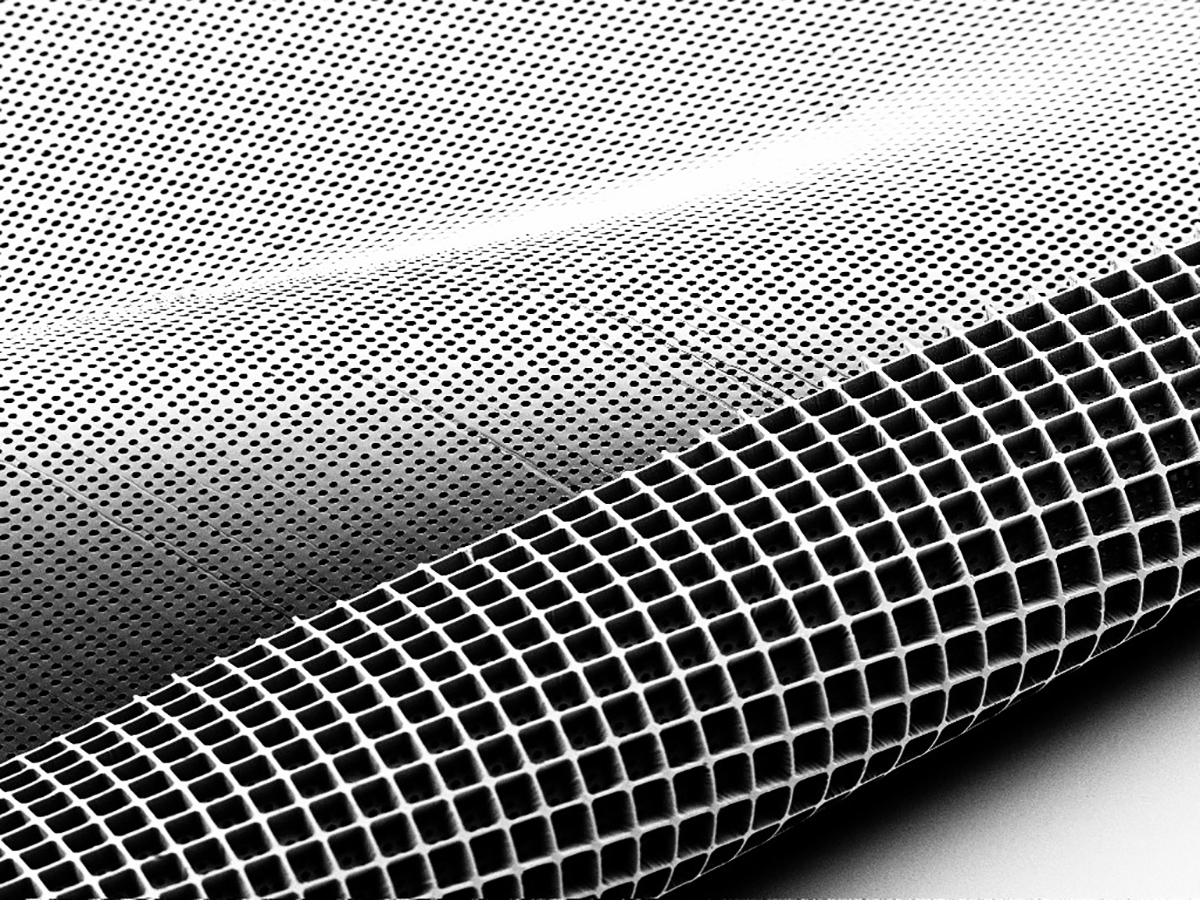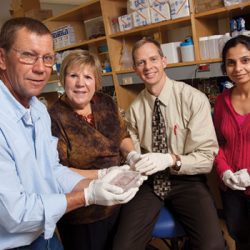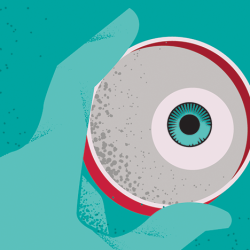A Cure in Sight for Vision Loss
An ingenious “scaffold” delivers cells to damaged areas of the retina.
An interdisciplinary effort among UW–Madison researchers is the next step toward curing once-irreversible vision loss.
David Gamm, professor of ophthalmology and visual sciences at the UW School of Medicine and Public Health and director of the McPherson Eye Research Institute (MERI), Shaoqin (Sarah) Gong, professor of biomedical engineering at the UW College of Engineering (COE) and the Wisconsin Institute for Discovery, and Zhenqiang (Jack) Ma, professor of electrical and computer engineering at COE, have developed a microfabricated scaffold designed to deliver light-sensitive photoreceptor cells to damaged areas in the retina.
Gamm and his team at MERI had already developed a method for growing new photoreceptor cells from stem cells, but they struggled to deliver these cells to their intended target in the retina. That was when Gamm reached out to Gong and Ma, a team he calls a “one-stop shop” for solving this problem.
Where Gamm provided the cells, Ma and his lab supplied the meticulous work of microfabricating a scaffold that would uniquely suit the transport of photoreceptor cells in the retina. After multiple models, the team settled on a structure they dubbed the “ice-cube tray” mold, which maximizes the capacity for holding cells while minimizing the amount of material necessary to create the scaffold. Gong and her lab screened potential biomaterials to constitute the scaffold before selecting one that was compatible with the retina and that would degrade in a timely manner once the cells had connected with the retina.
“I can’t emphasize how complex it is from an engineering standpoint,” Gamm says of the project. “It’s easy for me. I already had the cells; we can make them now in billions. The focus of this project has always really been on the engineering, so it’s [Ma] and [Gong] who have brought this project to where it is.”
A feat of medicine, engineering, and UW ingenuity, the scaffold holds promise for treating vision loss caused by currently incurable optical impairments, such as macular degeneration. The scaffold may also have other medical applications.
According to all three researchers, a groundbreaking innovation like this starts with cross-departmental communication.
“Until I met with some professors, like [Gamm], we did not know what problems they are facing,” Ma says. “When we worked together, we found that there are so many things to work on, and this is a huge space to explore.”
Published in the Fall 2021 issue




Comments
No comments posted yet.